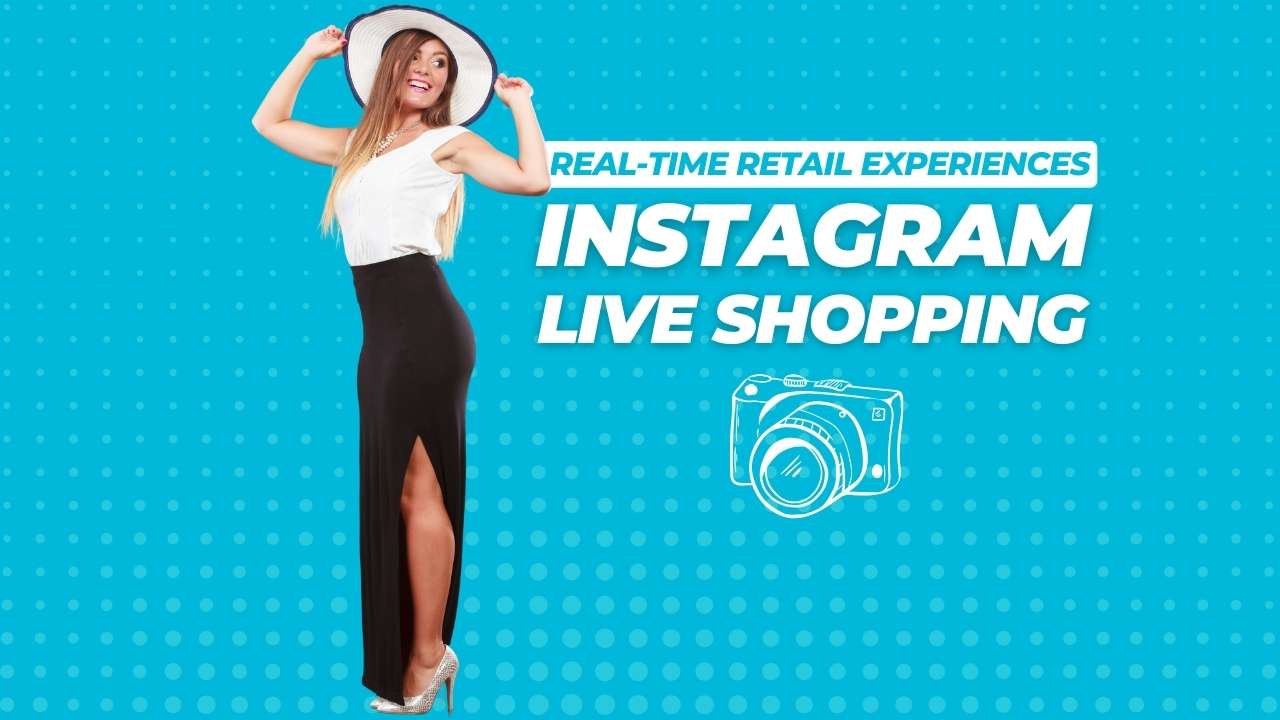“The odds of going to the store for a loaf of bread and coming out with only a loaf of bread are three billion to one.” These wry words by Erma Bombeck encapsulate a universal truth about shopping: it’s rarely just about the item we set out to buy. This humorous observation serves as a perfect entry point into the fascinating world of the psychology behind shopping and consumer behaviour.
At its core, shopping is more than a mere transaction; it’s a complex interplay of desire, decision-making, and often, delightful unpredictability. From the layout of a supermarket to the allure of a well-timed sale, every aspect of shopping is intricately designed to captivate our senses, evoke emotions, and sometimes, lead us astray from our original shopping list.
In recent years, we’ve witnessed a significant shift in shopping patterns, moving away from physical stores to the digital realm. The rise of online shopping has transformed the way we approach this age-old activity. The endless aisles of brick-and-mortar stores have been replaced by the boundless offerings of the internet, where everything is just a click away. This transition has not only redefined convenience but has also reshaped our shopping experiences and preferences, setting the stage for a new era of consumer behaviour that blends tradition with technology.
As we delve deeper into the psychology of shopping, it’s crucial to understand how these changes are influencing our choices, habits, and ultimately, our satisfaction as consumers. The journey from the simple intent of buying a loaf of bread to navigating the myriad options of the online marketplace reflects a fascinating evolution in our relationship with shopping.
The Lure of the Unexpected: Understanding Impulse Buying
Impulse buying, a phenomenon where a shopper makes an unplanned purchase, is a testament to the intricate psychology at play within the realms of retail. This section of our exploration delves into the various psychological factors that lead to such spontaneous purchases and how both physical and online retail environments are designed to maximise this behaviour.
At the heart of impulse buying is the human brain’s response to novelty and reward. When shoppers encounter something unexpected or perceive a good deal, it triggers a release of dopamine, the ‘feel-good’ neurotransmitter. This reaction is often strong enough to override the more rational, budget-conscious parts of our minds. In physical stores, this is often seen when customers pick up items that catch their eye while they are en route to getting what they initially intended to buy.
Retailers have long capitalised on this psychological tendency by strategically designing store layouts. The placement of products is anything but random; it’s a carefully crafted science. Essential items, like bread and milk, are often located at the back of stores, compelling customers to navigate a maze of tempting products. End caps, the displays at the end of aisles, are prime real estate for impulse buys, often featuring sale items or seasonal goods. Checkout counters are another hotspot, where small, inexpensive items wait to catch the shopper’s eye at the last moment.
The online shopping environment, while lacking physical space’s tangibility, compensates with its own set of strategies to encourage impulse buying. Algorithms power recommendations, showing users items similar to what they are viewing or have purchased before. These suggested products, often accompanied by limited-time offers or flash sales, create a sense of urgency and exclusivity. The ease of adding items to a virtual cart further facilitates this impulsive behaviour. Additionally, online retailers use retargeting techniques, where ads for products shoppers have viewed follow them around the internet, gently nudging them back to make a purchase.
Interestingly, the lack of physical interaction with the product in online shopping doesn’t seem to diminish the impulse to buy. Instead, the immediate gratification of clicking ‘buy now’, coupled with the anticipation of the product’s arrival, adds another layer of excitement to the process.
In both physical and online stores, the lure of the unexpected plays a crucial role in shaping shopping behaviour. The tactics might differ in their execution, but their goal remains the same: to tap into the spontaneous, sometimes irrational, joys of shopping, turning a simple trip for a loaf of bread into a journey of delightful and unexpected discoveries.
The Joy of Discovery: The Appeal of Online Boutique Stores
In recent years, the growing trend of online boutique shopping has brought a refreshing dimension to retail therapy, offering an experience rich in discovery and personalisation. This segment of the market, though niche, has carved out a significant presence, captivating consumers with its unique charm and bespoke offerings.
At the heart of online boutique stores’ appeal is the sheer variety of unique, artisanal, and customised products they offer. Unlike mainstream online retailers that often focus on mass-produced goods, boutiques provide a platform for small-scale artisans, designers, and creators. This results in an assortment of products that are not just items for purchase but are more akin to pieces of art, imbued with stories and craftsmanship. The allure lies in owning something unique, perhaps even one-of-a-kind, which stands out from the standardised offerings of larger retailers.
This uniqueness feeds into the joy of discovery – a key element that keeps consumers engaged and repeatedly returning to these online boutiques. Browsing these stores is akin to embarking on a treasure hunt, where each click brings the potential for uncovering something new and unexpected. For the consumer, this is not just shopping; it’s an adventure, an exploration of the unknown and untried.
Furthermore, the personalisation aspect of boutique shopping adds another layer of appeal. Many online boutiques offer products that can be customised or are made to order, giving customers a sense of participation in the creative process. This personal touch transforms the shopping experience from a mere transaction to an interactive and personal journey.
Many online boutiques offer products that can be customised or are made to order, giving customers a sense of participation in the creative process. This personal touch transforms the shopping experience from a mere transaction to an interactive and personal journey.
Online boutiques also leverage the element of surprise through their marketing strategies. Curated collections, limited edition drops, and surprise flash sales create an atmosphere of exclusivity and urgency. Email newsletters often contain hidden gems, encouraging subscribers to explore further. Social media platforms, used effectively by these boutiques, amplify this sense of discovery, showcasing products in lifestyle contexts and creating a narrative that resonates with the audience.
In essence, the joy of discovery in online boutique shopping is about more than just the acquisition of goods. It’s about experiencing the thrill of finding something new, the pleasure of engaging with creativity, and the satisfaction of owning something that truly reflects one’s personal style and values. This emotional connection, fostered through the discovery process, is what continually draws consumers back to the enchanting world of online boutiques.
The Impact of Emotions and Environment on Shopping Decisions
The interplay between emotions and the shopping environment plays a pivotal role in influencing consumer buying decisions. This section explores how these factors, especially in the context of online shopping, affect consumer behaviour and drive purchases.
Emotional Triggers in Shopping
The act of shopping is deeply intertwined with emotions. The excitement of finding something new, the joy of a bargain, or the thrill of adding a luxury item to one’s collection can all elicit powerful emotional responses that directly influence buying decisions. Emotions can heighten the perceived value of an item, making it more desirable. For instance, the discovery of a unique item in an online boutique can create a sense of exhilaration and exclusivity, prompting an immediate purchase.
Moreover, shopping can also be a form of emotional coping, offering a sense of comfort or escape. The pleasure derived from shopping can temporarily relieve feelings of sadness, stress, or boredom. This emotional gratification can lead to impulse purchases, where the decision to buy is more about the emotional reward than the need for the product itself.
The Role of the Shopping Environment
The environment in which shopping takes place significantly impacts consumer decisions. Online shopping, with the comfort of browsing from home, offers a relaxed and pressure-free environment. This comfort can lead to more thoughtful purchases or, conversely, to more impulsive buying as the ease of clicking and buying is right at one’s fingertips.
The online environment also allows for a more personalised shopping experience. Without the physical constraints of a store, online retailers can offer a wider range of products and tailor their displays to individual consumer preferences, based on their browsing and purchase history. This personalisation makes the shopping experience more relevant and engaging, potentially leading to increased customer loyalty and higher sales.
Personalisation and Customer Experience
Personalisation in online shopping creates a unique emotional connection with consumers. When a website remembers a customer’s preferences, suggests items based on past purchases, or offers personalised discounts, it creates a feeling of being valued and understood. This level of personal attention can enhance the overall shopping experience, making it more enjoyable and effective.
Additionally, the customer experience, which includes everything from website design to customer service, plays a crucial role in shaping the emotional response of the shopper. A well-designed, easy-to-navigate website can evoke feelings of pleasure and satisfaction, while poor design or bad customer service can lead to frustration and a potential loss of sale.
In conclusion, emotions and the shopping environment are deeply interconnected and play a significant role in shaping shopping decisions. Online retailers who successfully manage to create a positive emotional experience through a comfortable and personalised shopping environment are more likely to win over consumers and encourage both immediate and repeat purchases.
Conscious Shopping: Balancing Desire and Discipline
In a world where the allure of shopping and the ease of acquiring new items are ever-present, conscious shopping becomes a crucial practice. This section discusses strategies for mindful shopping, balancing the inherent thrill of discovery with responsible spending, and underscores the importance of making consumer choices that support small businesses and sustainable practices.
Strategies for Mindful Shopping
- Set Clear Intentions: Before shopping, take a moment to consider what you need versus what you want. Setting clear intentions can help you stay focused, reducing the likelihood of impulse purchases.
- Budgeting and Lists: Create a budget and a shopping list, and try to stick to them. This helps in prioritising your needs and keeps your finances in check.
- Research Before Buying: Take time to research products, especially for significant purchases. This can prevent buyer’s remorse and ensure that you’re investing in items that truly add value to your life.
- Wait Before You Buy: Implement a waiting period for non-essential items. This delay can help you discern whether it’s a genuine need or a fleeting desire.
- Quality Over Quantity: Consider buying fewer, higher-quality items that last longer, rather than numerous cheaper, lower-quality products that might need to be replaced more frequently.
Supporting Small Businesses and Sustainable Practices
Conscious shopping extends beyond personal financial responsibility to encompass the broader impact of our purchasing choices. By supporting small businesses, consumers can contribute to the local economy and help foster community growth. Small businesses often offer unique, handcrafted products, adding diversity to our shopping choices.
Sustainability is another crucial aspect. Opting for products made with sustainable practices not only supports the environment but also promotes ethical business practices. This can include choosing eco-friendly materials, supporting brands with fair labour practices, and reducing waste by buying durable goods.
The Fulfilment of Conscious Consumerism
Understanding our shopping psychology is not just about controlling impulsive buying; it’s about aligning our purchasing habits with our values and long-term goals. Conscious shopping encourages us to question what truly brings us joy and satisfaction. It’s about finding a balance between the pleasure of new discoveries and the gratification that comes from making thoughtful, responsible choices.
In essence, conscious shopping isn’t just a financial strategy; it’s a lifestyle choice that leads to more fulfilling and responsible consumer experiences. It empowers us as consumers to make decisions that not only benefit ourselves but also have a positive impact on the community and the environment. This holistic approach to shopping can transform our relationship with consumption, leading to a more mindful, intentional, and rewarding way of living.
Conclusion: Reflecting on the various facets of shopping and consumer behaviour
From the impulsive allure of unexpected finds in physical stores to the unique joys of discovery in online boutiques, shopping is an activity rich in psychological intricacies. The comfort and personalisation offered by online shopping environments further shape our experiences, creating emotional connections that transcend mere transactions.
However, amidst this landscape of endless choices and opportunities for instant gratification, the importance of conscious shopping emerges as a crucial counterbalance. By adopting mindful shopping strategies, we can enjoy the thrill of new discoveries while also maintaining financial discipline and responsibility. Supporting small businesses and sustainable practices becomes not just a personal choice, but a collective responsibility that extends the impact of our shopping habits beyond our immediate needs.
As we navigate the dynamic world of retail, it is essential to be aware of our shopping habits and the underlying motivations driving them. Being informed and intentional in our choices allows us to align our purchasing habits with our broader life goals and values.
I encourage you, the reader, to explore your own shopping experiences. Reflect on how the emotions and environments influence your buying decisions and consider how you can incorporate conscious shopping practices into your life. Remember Erma Bombeck’s humorous yet insightful observation: “The odds of going to the store for a loaf of bread and coming out with only a loaf of bread are three billion to one.” Let this be a reminder of the delightful unpredictability of shopping, but also of the power we hold as consumers to make choices that are fulfilling, responsible, and reflective of who we are and what we stand for.
In the end, each purchase is not just a transaction, but a narrative of our choices, values, and the world we want to create through them.















